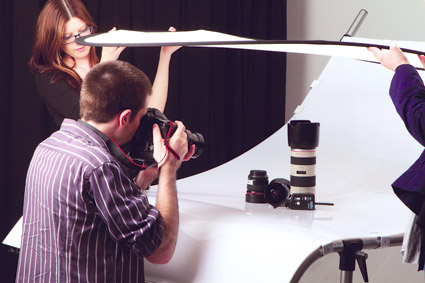editorial – rt98

CSU photography students Amy Sinclair, Jason Schoenfeld, School of Communications & Creative Industries, Charles Sturt University, Wagga Wagga, NSW
The accompanying shot of photography students photographing a camera seemed apt for a RealTime edition where academics look at the relationship between the university as academy and the university as arts training institution. There are times when arts education tensions seem to go sharply binary. Our annual arts education coverage suggests that this is one such moment as the traditional notion of university study comes up hard against art practice. Even as practice-based research seems to be gaining traction, albeit not universally, other areas of tension open up. There is growing concern that as universities increase their investment in postgraduate programs, undergraduate students are in danger of losing out. We hear from academics who feel a strong obligation to students who will not be going on to higher degrees and whose focus is on making work and connecting with the sector of the arts economy in which they wish to work. The teaching emphasis here is on creating good learners who are flexible, deeply informed, multi-skilled and have substantial in-course ‘real world’ contact through work experience, professional practice and showing their work publicly. Some of the concern about undergraduate well-being is exacerbated by the effects of the absorption of arts training institutions into universities (most recently witnessed in the deleterious Melbourne University takeover of the Victorian College of the Arts & Music) who want to cost-cut class and studio times that creative arts courses desperately need for skills development and creative work. Some creative arts academics ask, again after years of amalgamation and rationalisation, is the university the right place for the creative arts? Others see universities now as too vocationally oriented, failing to develop critical enquiry. Some are concerned that the integrity of their discipline is weakened by artforms being shunted into multidisciplinary faculties, while others celebrate the interdisciplinary opportunities. Another tension is felt between university teaching and a socially networked world that invites decentralised learning: “What is to become of knowledge…in the confessional tweet economy when definitions of media art, discussions of the media sector and what I’m wearing at the time will be undifferentiated noise in the flow?” (see Darren Tofts). Some of these tensions will be destructive if skills development is diminished or the vocational thrust dominates; other tensions will be creative, making the university interdisciplinary…or “undisciplined” (see Peter Anderson).
RealTime issue #98 Aug-Sept 2010 pg. 1






